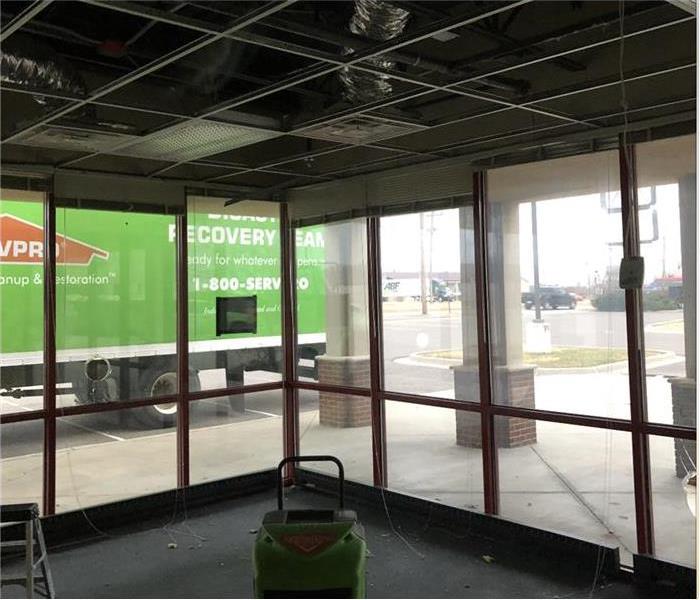5 Steps for Handling a Flooded Commercial Building
4/3/2020 (Permalink)
5 Steps for Handling a Flooded Commercial Building
After a storm in Oklahoma City, OK, your building may experience a flood. It’s best to know beforehand how to manage the flood cleanup, such as what to keep and what to tear out. In the aftermath of a flood:
1. Turn Off Electricity
Before stepping into any water, you must shut off power to the flooded area. An electric current will flow through water in which electronics or appliances are sitting. Simply stepping into this water could be deadly. If you can’t safely navigate to the breaker box, call an electrician to turn the electricity off at the meter.
2. Stop the Water
If rainwater is still flowing into the building, you may be able to block it with sandbags or flood bags. More measures can be taken once the rain stops or lets up significantly.
3. Extract Standing Water
As soon as it stops entering the building, you should begin removing standing water. A wet/dry vacuum is an excellent investment to have on hand for such situations. It’ll safely and quickly extract water and small debris. If a wet/dry vacuum isn’t available mops and towels will have to do.
4. Remove Water-Damaged Material
When all the standing water is removed, you’ll want to extract all waterlogged materials as soon as possible. Water damage will continue to increase as long as saturated items remain; tear out could be substantial. Water-soaked carpet and padding will have to be disposed of. Porous items such as upholstered or wooden furniture can be kept only if it can be completely dried within 48 hours. Wet drywall will also need to be removed and discarded, as it’ll quickly start growing mold throughout the material.
5. Disinfect and Dry
Mold will begin growing within 24 hours of water exposure, so it’s important to sanitize and dry all surfaces as quickly and as thoroughly as possible. Borax is recommended as opposed to bleach for cleaning. Use fresh air, fans, heaters, and dehumidifiers to dry the area.
If your property has been affected by floodwaters, storm restoration professionals can help. From water extraction to tear out and drying, they’ll return your building to its preloss condition.





 24/7 Emergency Service
24/7 Emergency Service
